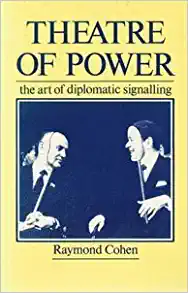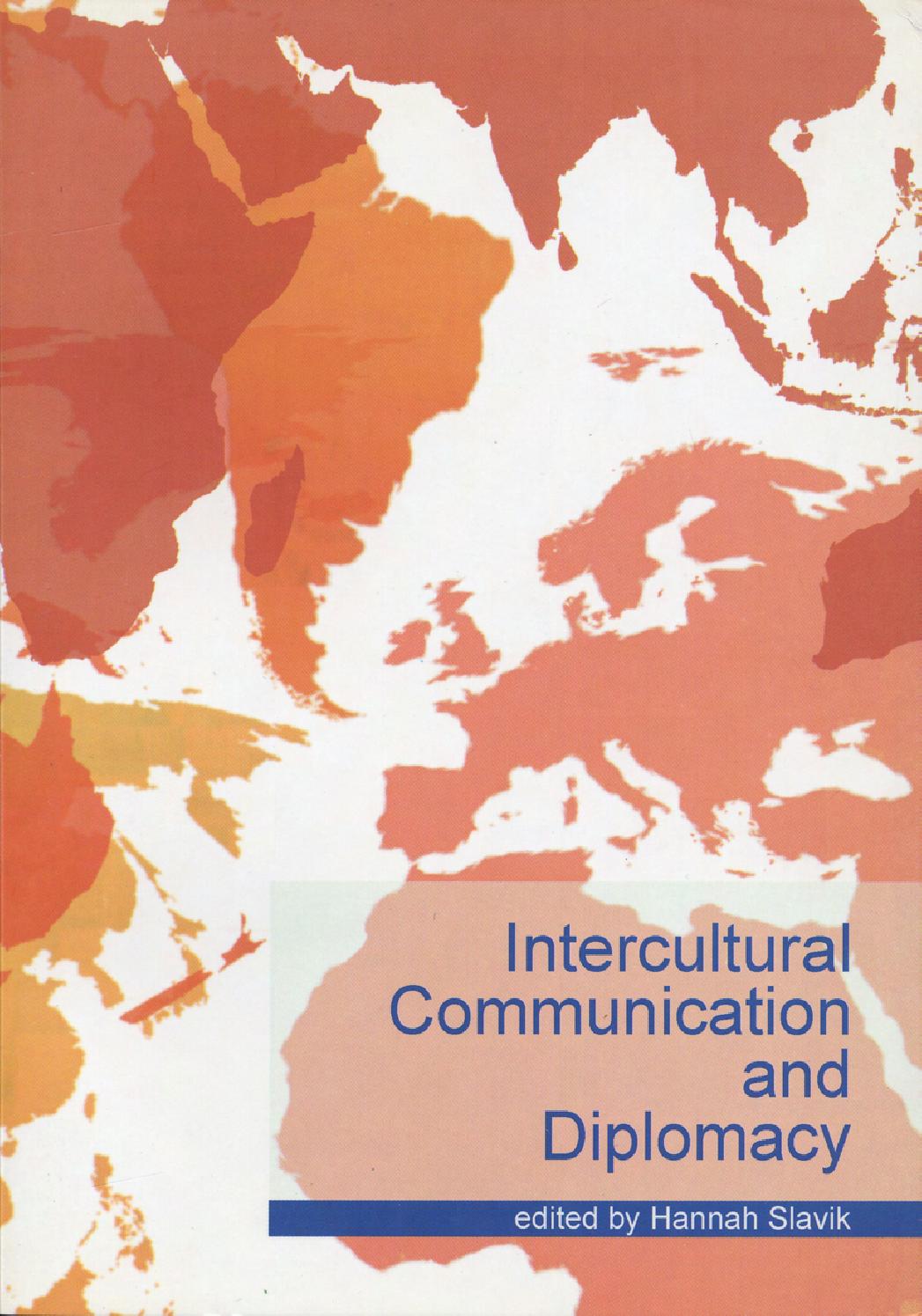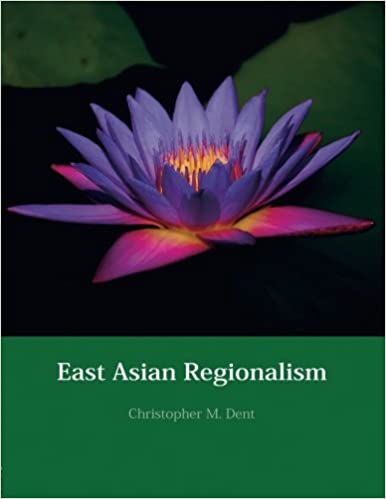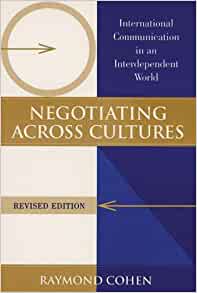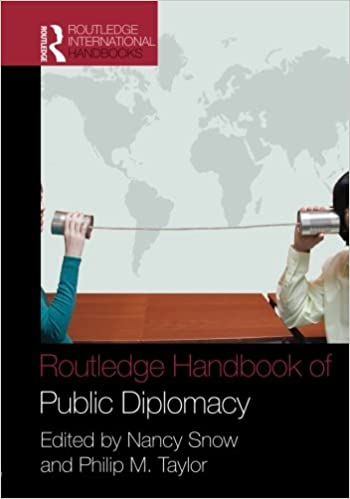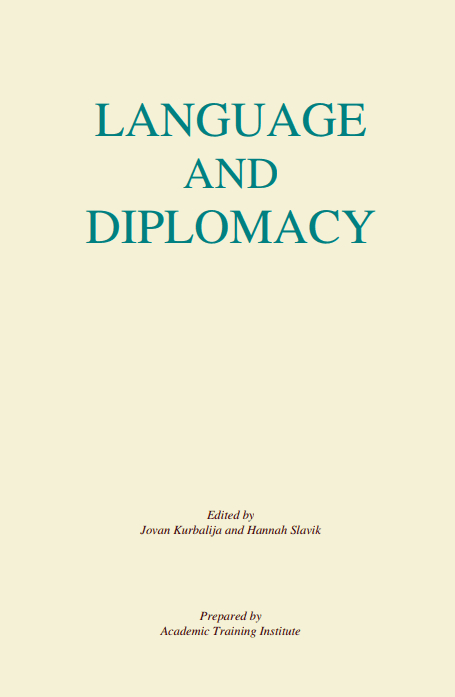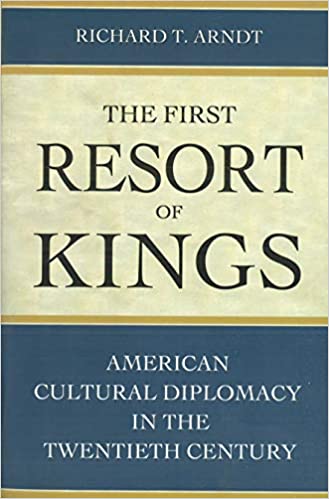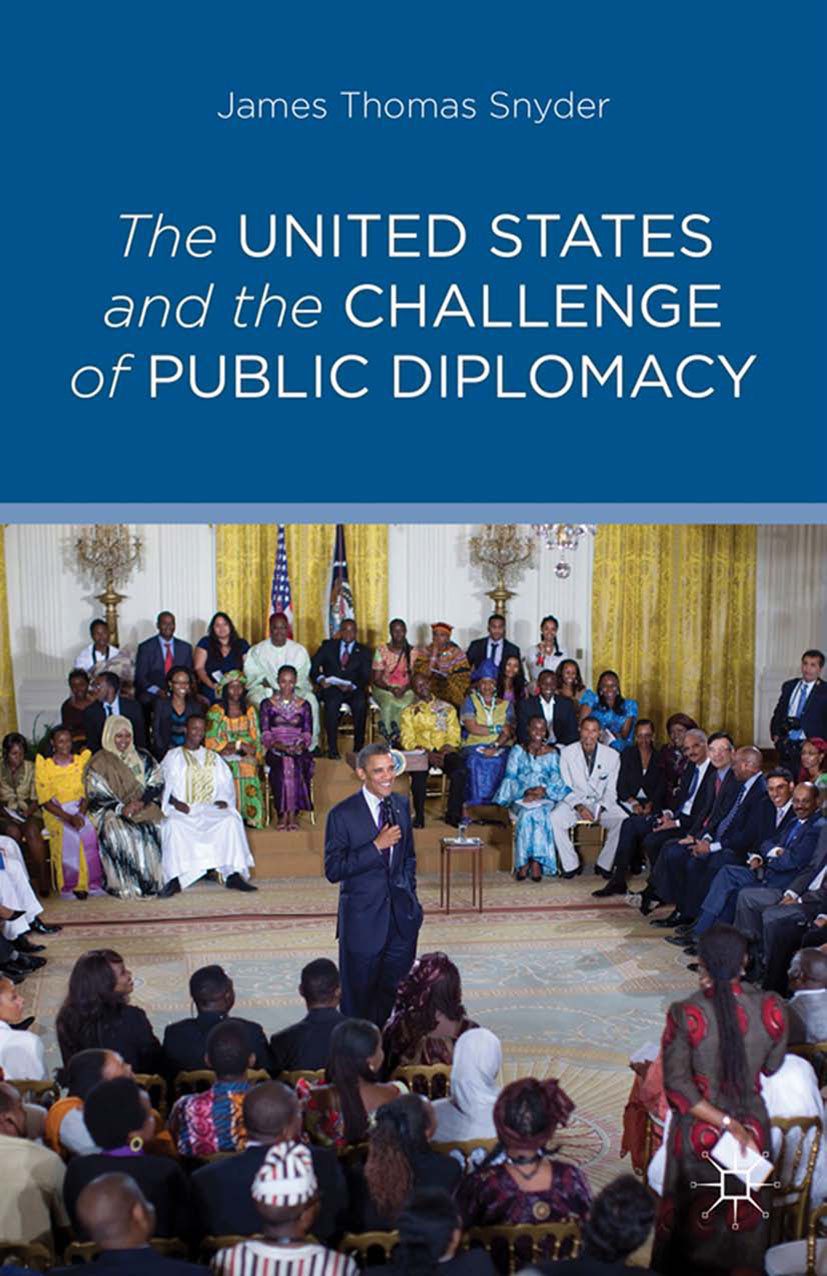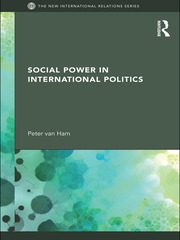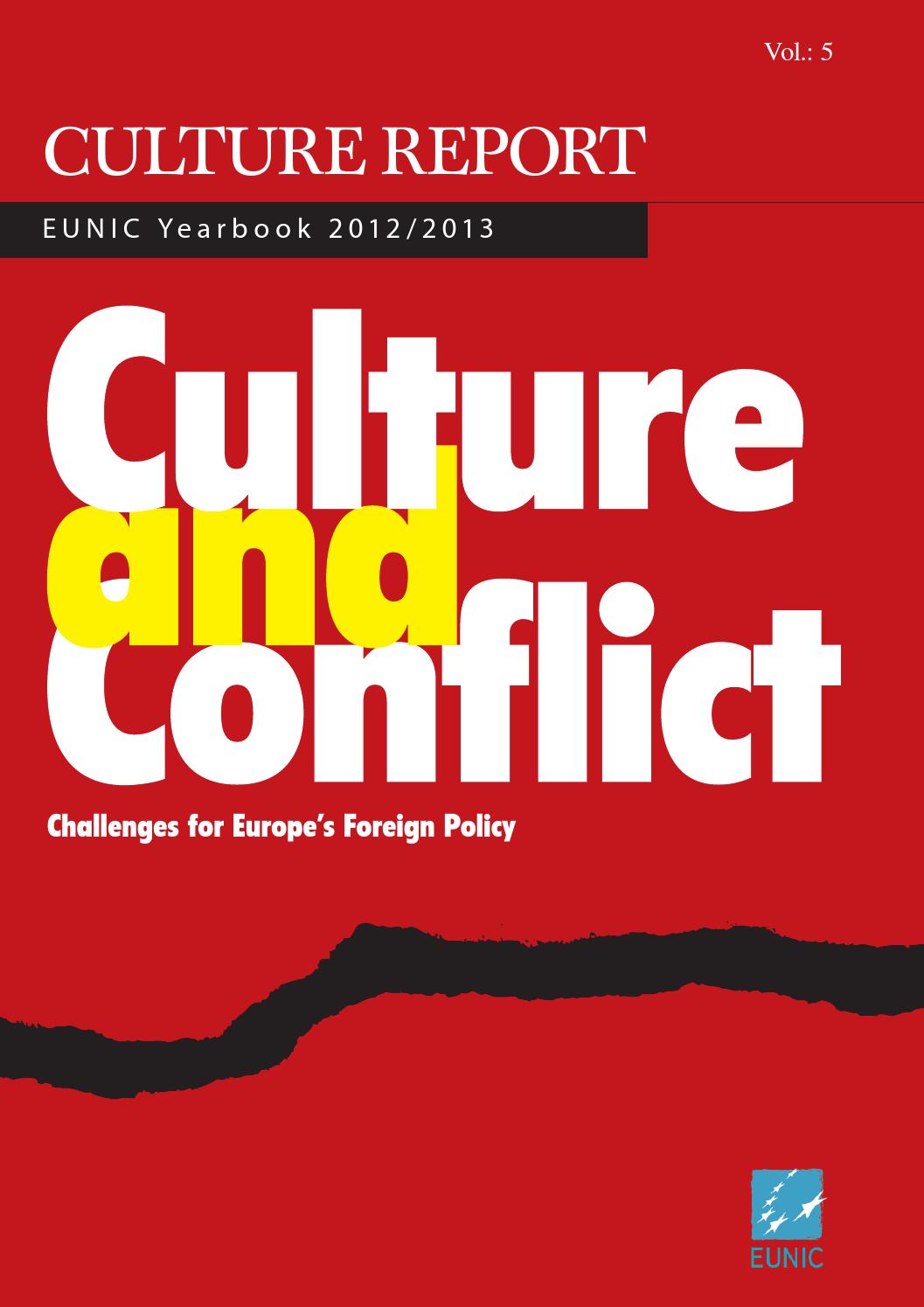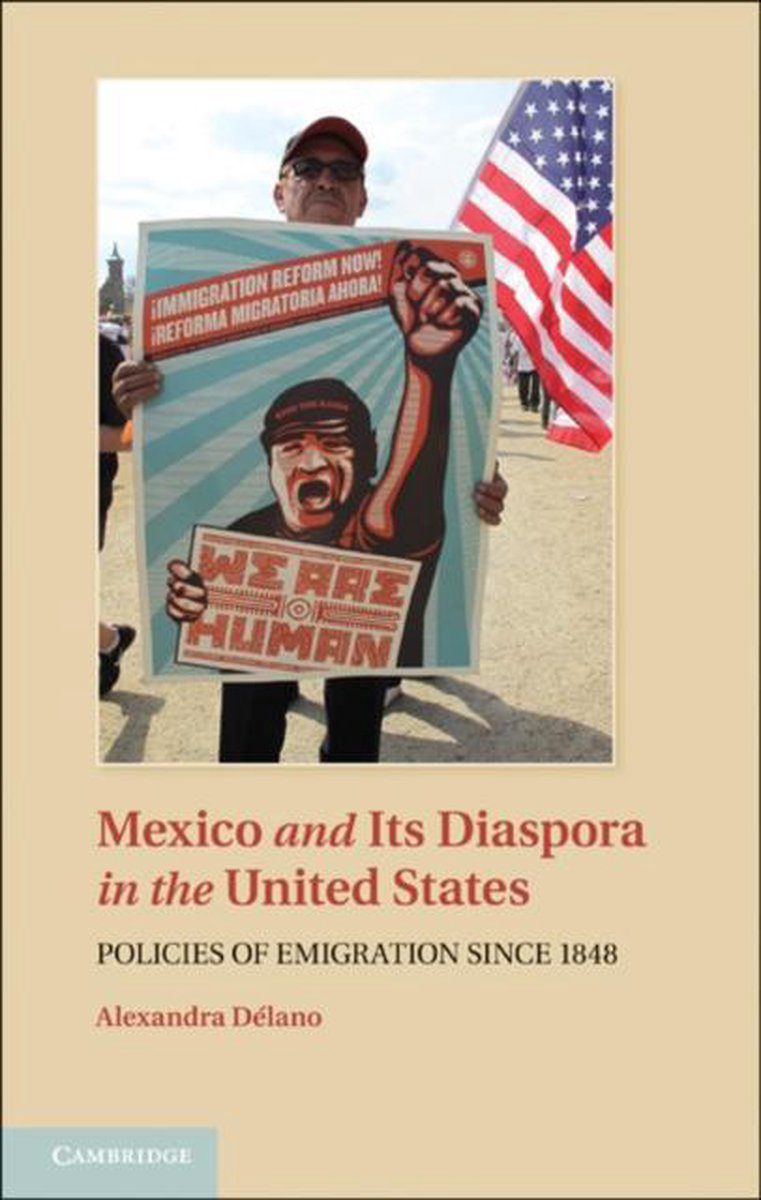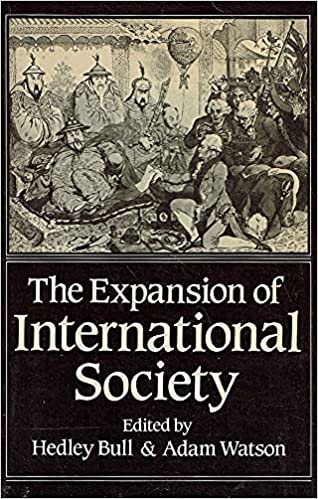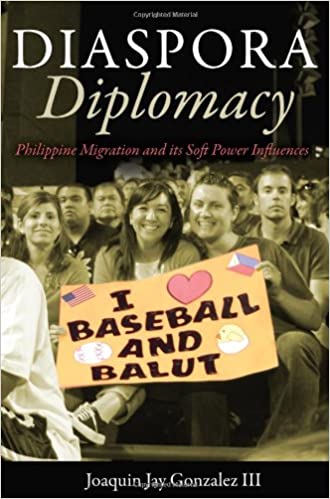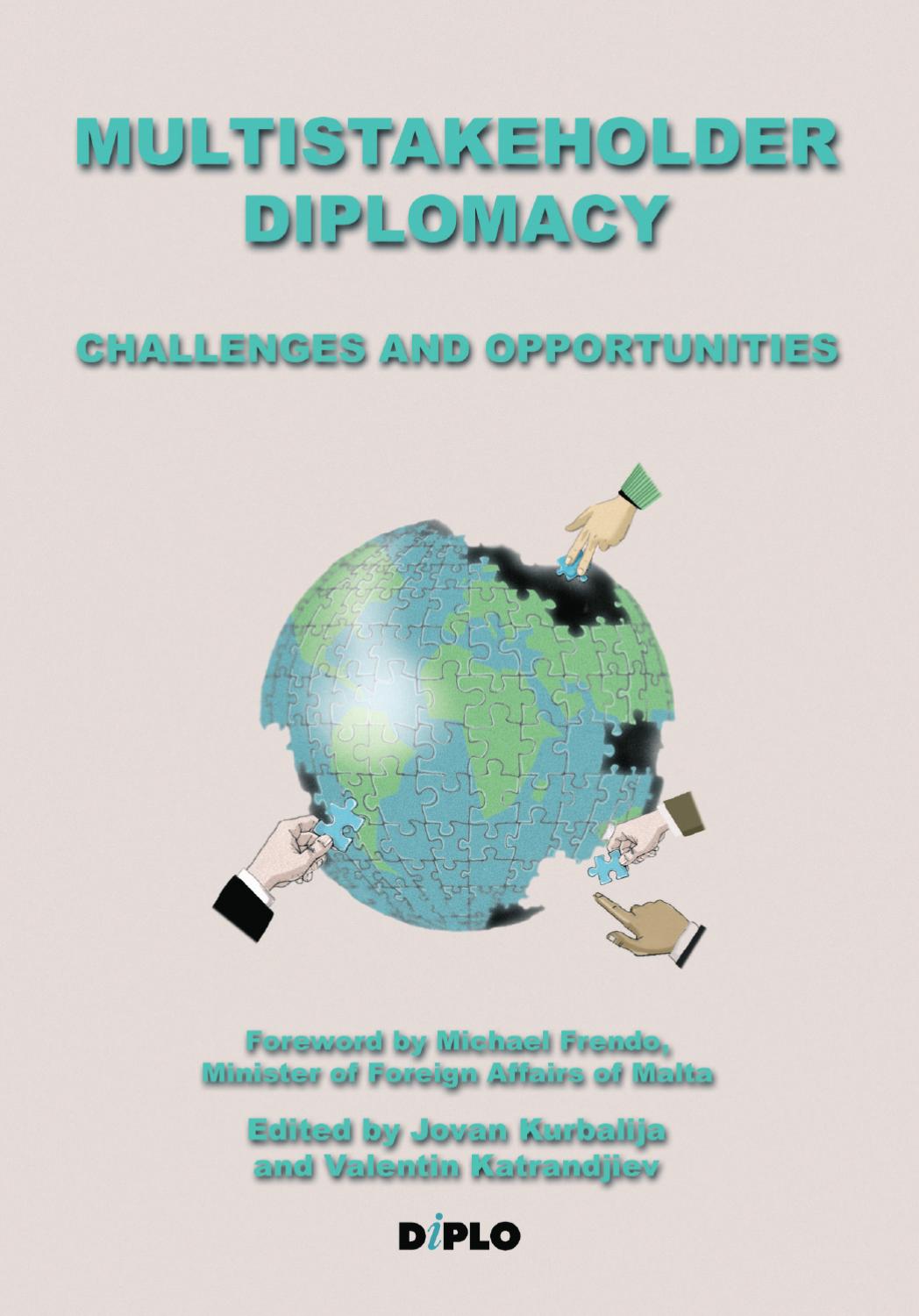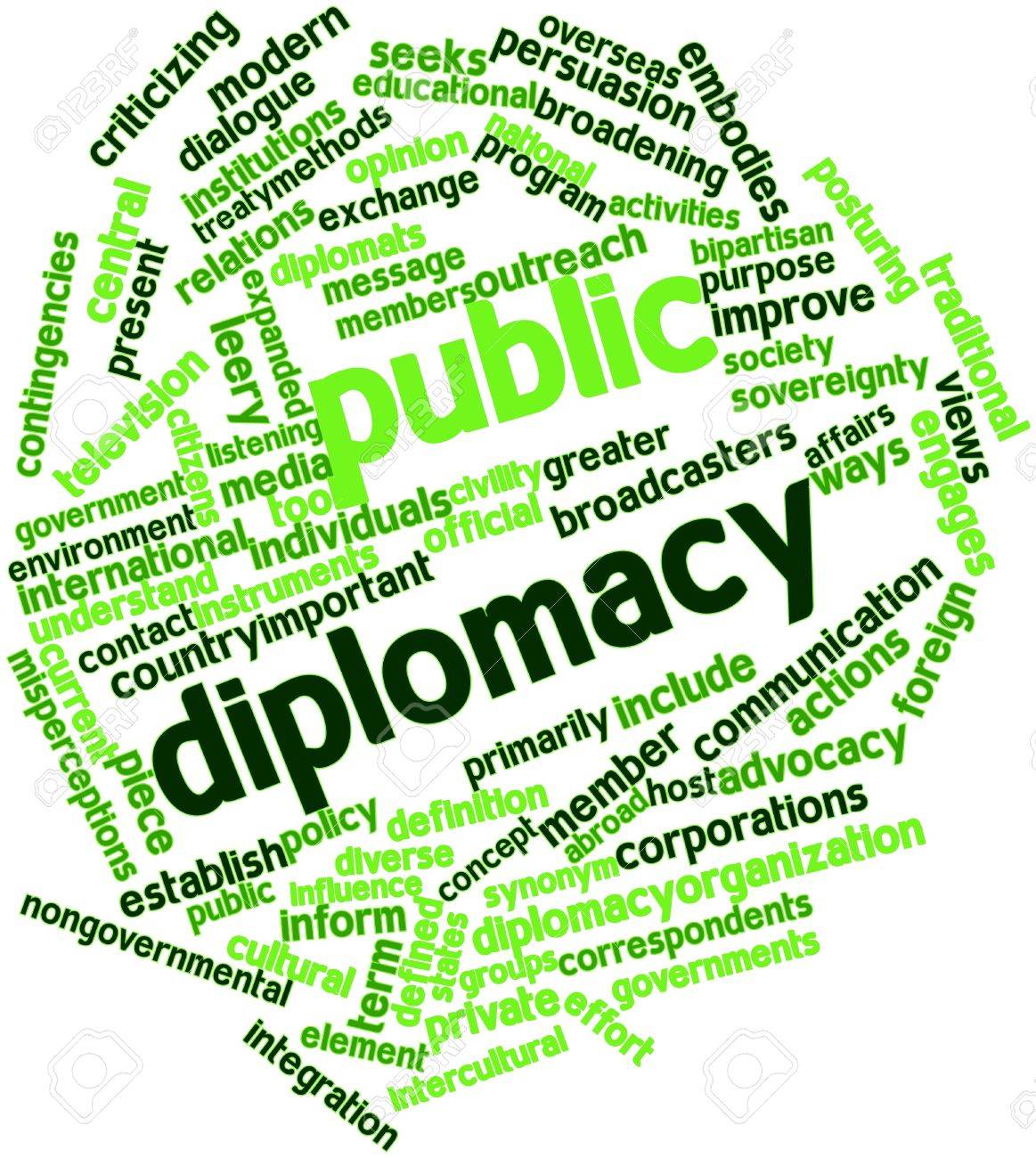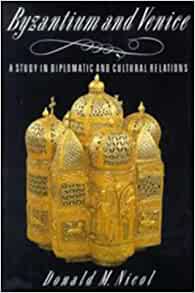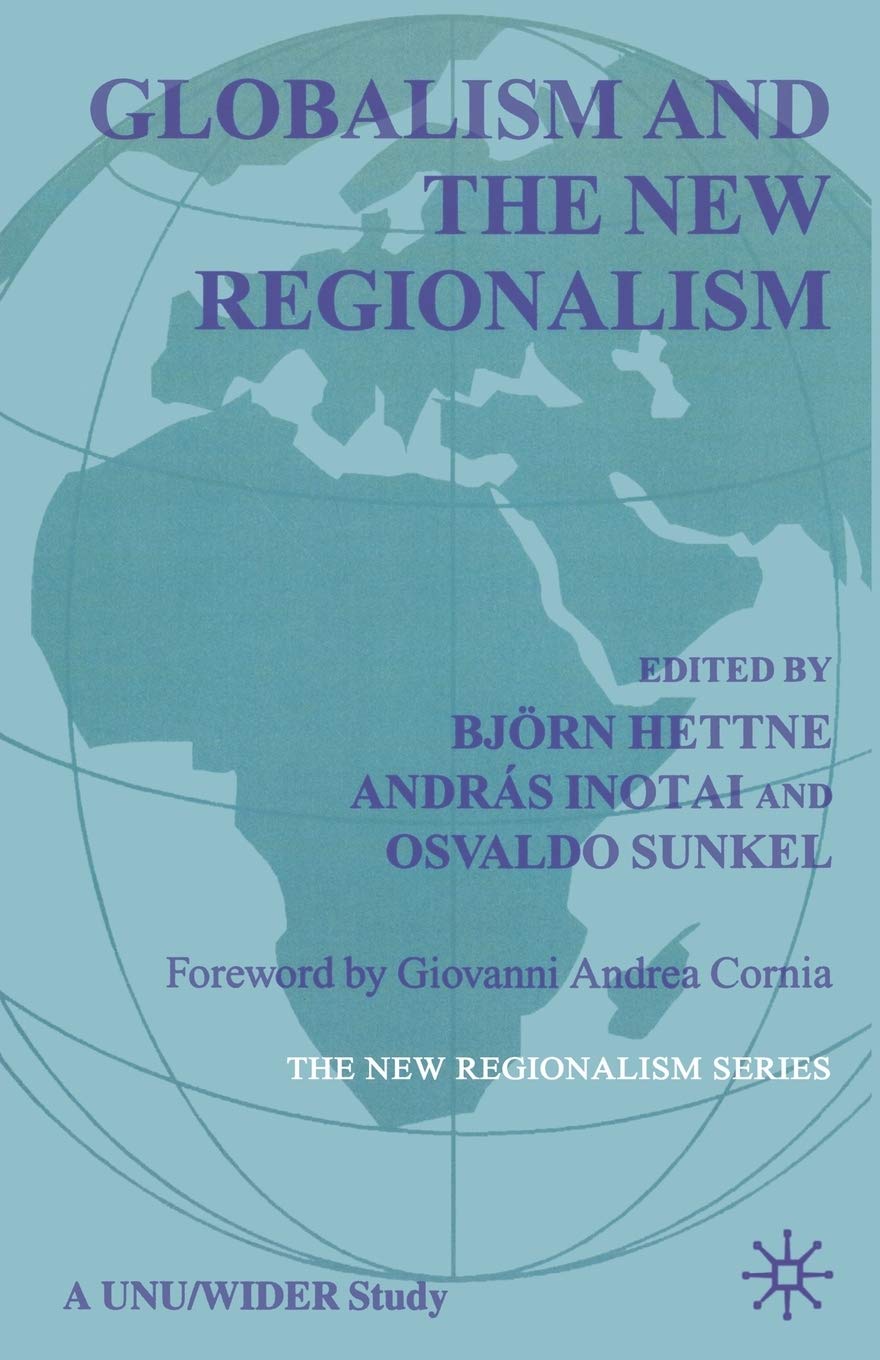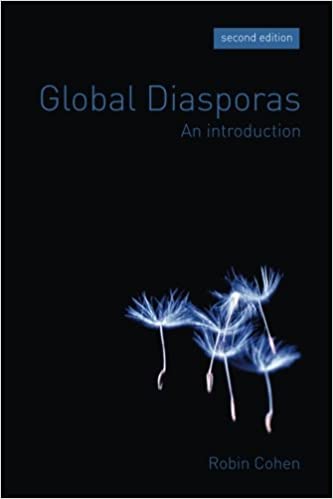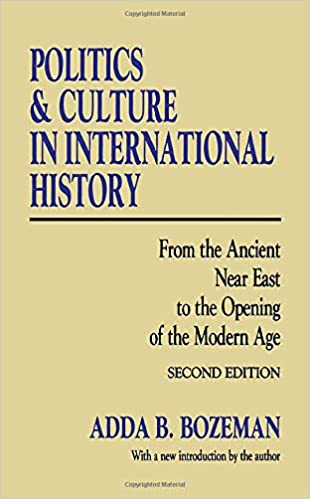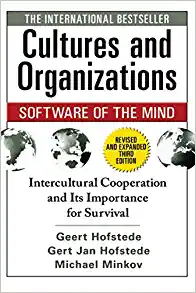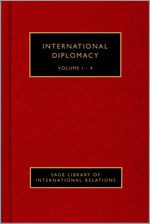Looking back on the abortive Israeli-Syrian peace negotiations of 1995-96, chief Israeli negotiator and distinguished Arabist Itamar Rabinovich pondered the language gap between the two sides that prevented their reaching agreement despite a clear convergence of interests: “The Israeli-Syrian dialogue”, he remarked, “was a striking example of the ability of the two old foes, who were trying to reach agreement, to speak in the same terms – but in a different language.”2 Why did Syria vigorously object to Israeli insistence on “normalization”, only eventually to agree on “normal peaceful relations”? What did Syrian spokesmen mean when they bitterly criticized Israel for “bargaining” about peace? By definition, negotiation is an exercise in language and communication, an attempt to create shared understanding where previously there have been contested understandings. When negotiation takes place across languages and cultures the scope for misunderstanding increases. So much of negotiation involves arguments about words and concepts that it cannot be assumed that language is secondary and all that “really” counts is the “objective” issues at stake. Can one ever speak of purely objective issues? When those issues include emotive, intangible concepts such as “honor”, “standing”, “national identity”, “security”, and “justice” can we really take it for granted that the parties understand each other perfectly? And if not, what can be done to overcome language barriers?
The Middle East Negotiating Lexicon is an interpretive dictionary of key negotiating words in Arabic, Farsi, Hebrew, and Turkish. It is intended as a reference facility for English-speaking observers and practitioners of negotiation interested in clarifying language and resolving linguistic discrepancies. For those wondering just what Syrians understand by “normalization” and “bargaining” the lexicon provides an analysis of the equivalent Arabic terms. Alongside difficult, contested concepts such as “rights”, “disagreement”, and “peace”, ordinary day-to-day negotiating words like “argument”, “instructions”, and “document” are also interpreted. It emerges that ostensibly simple ideas may be as prone to cross-cultural variation as obviously complex notions. Nevertheless, it should be emphasized that the lexicon is a guide to meaning rather than behavior. How we negotiate is influenced by our understanding of what “concession”, “compromise” and other key terms imply; yet there is no linear cause-and-effect relationship between conception and action. Our actions depend on a range of other factors including circumstances, issues, personalities, power, and, crucially, the feedback received from our opponent. What the lexicon does is to suggest what Middle Easterners mean when they refer to notions such as “principle”, “commitment”, and “interest.” It does not purport to be a simplistic do-it-yourself manual of negotiating or a crystal ball, but a guide through a linguistic maze.
Besides the usual dictionary-type definition, each entry seeks to give the range of possible meanings of words, drawing attention to special features of use, describing possible religious and historical connotations, and analyzing the social and cultural associations evoked by the word for the native speaker. Examples of use are taken from the daily press and accounts of negotiators. In effect, each entry consists of a brief interpretive and illustrated discussion. Entries for each language were prepared by two mother-tongue researchers working separately to permit cross-checking and to control for blatantly subjective interpretations. Draft versions were verified by a third senior academic who was also a native speaker. Overall guidance and supervision was exercised by the author, who also edited the final product.
Behind the preparation of the lexicon lay the conviction that differences between languages matter deeply. Living and working in two languages, English and Hebrew, I was struck by how each language seemed to manifest a different outlook on the world. Things that could be said easily and elegantly in one tongue lent themselves to laborious expression in the other. Where one called for understatement, the other required hyperbole. Ostensibly slight nuances of tone and nice distinctions evoked quite far-reaching differences of association and meaning. Similar observations have been made by many authors, nomads across cultures and languages.3 Indeed, “the impossibility of translation” lies at the heart of cultural and linguistic distinctiveness (which does not mean that one should not try to bridge the gap). Personally, I had always been particularly impressed by the dramatically different sensibilities, ways of thinking, feeling, and perceiving, reflected in the English Bible and the Hebrew Bible or Tanach, for instance, in the Book of Psalms.
One day a friend interested in the Jewish roots of Christianity asked me if the Christological term “the lamb of God” (agnus dei) might not be an allusion to the Passover sacrifice in the Temple of Jerusalem. Assuming that the first Christians would be fully conversant with the Hebrew Bible, I embarked on a small investigation. In Biblical Hebrew the precise term for a sheep is of great importance: The society was a pastoral one and religious tradition was meticulous about the species, age, and gender of Temple sacrifices. If lamb or agnus refers to a young sheep (Hebrew: seh) then the reference could not be to the Temple sacrifice discussed in Leviticus (4:32, 35; 5:6, 7). Although translated as “lamb”, the original Hebrew is keves, not seh. The more likely reference of agnus dei is to two other Hebrew Biblical references: One is the Exodus sacrifice of a yearling lamb (seh), whose blood was smeared on the lintels of the homes of the departing Israelites (Exodus 12:3-5). The other is the Akedah, Abraham’s journey to Mount Moriah to sacrifice Isaac, his only son. Isaac asks: “behold the fire and the wood, but where is the sacrificial lamb (seh)?” Abraham answers: “God will provide the sacrificial seh” (Genesis 22:7-8). As a political scientist and student of negotiation I concluded that if slight nuances of interpretation can be of such theological significance, then perhaps differences in conceptualizing negotiation and conflict resolution might also have important consequences.
SEMANTIC ANTINOMIES
The case for the importance of language and culture rests on the view that semantic distinctions reflect different interpretations of reality and normative modes of behavior. Words and their translations are not just interchangeable labels denoting some given, immutable feature of the world but keys opening the door onto different configurations of the world. A stone is an object that speakers of all languages can recognize and respond to at a non-linguistic level. They can kick it, throw it in a pond, or use it to crack a nut. The moment language is used and the object is named, culture enters the picture. As opposed to the thing itself, the word “stone” or its equivalents is a cultural notion. As such it is steeped in the culturally-grounded meanings of the given language community in the light of its history, religion, customs, and environment. The word is therefore a shorthand symbol capable of evoking a unique range of specialized references, uses, and associations. Words are polysemic, that is, they have multiple clusters of meaning and usage. Across languages these spreads of meaning occupy different semantic fields, though they may well coincide and overlap in certain places. Speakers of Hebrew and English may talk of “peace”, using the word in appropriate contexts, and referring to the same legal precedents. But what they mean by peace are subtly different phenomena. “Peace” refers in English to a relationship established by treaty between states concluding war, an ideal prophetic vision of harmony, and tranquility. Shalom shares in the Biblical vision of universal accord but lacks the legal features that “peace” acquired in the European state system from centuries of diplomatic practice. Moreover, deriving from an ancient Semitic root referring to wholeness or completeness, shalom importantly connotes “health, welfare, greetings, and safety”. Hence the common Israeli army bulletin broadcast after a military operation: “All our planes returned b’shalom to base.” Here b’shalom means “safe and sound”, not “in peace”.
Drawing on the Middle East Negotiating Lexicon it is possible to distinguish between various categories of linguistic dissonance. The following very selective register of themes is not meant to be definitive but to clarify and exemplify the basic message of this entire exercise: that languages are programmes for interpreting reality and mapping the boundaries of possible behavior, and that they do this in diverse ways. If we have a guide to the difficult terrain, we will be better equipped to avoid pitfalls.
Here are some basic antinomies:
1. Different Distinctions Drawn
English, for reasons doubtless connected with the Anglo-Saxon regard for democracy and the rule of law, and suspicion of untrammeled authority, is not very interested in drawing fine distinctions about the nature of leadership. Significantly, apart from the pejorative term “dictator”, and loan words also referring to anti-democratic tendencies, such as führer and duce, “leader” covers all. Indeed, even “leader” can carry ironic connotations of a bossy boots. Where distinctions are made it is by the use of specialist role words such as president, prime minister, secretary of state, governor, chairman of the board, and so on. These role words are largely devoid of extra-functional associations. In fact, the word “president” is used in the United States to mean the head of any business corporation, however minor, and sometimes self-appointed. Unlike English, Turkish evokes fine shades of meaning in the granting of leadership titles. Of course, were English speakers interested in doing this they could quite easily invent appropriate terms or borrow them from other languages. There is no suggestion – as George Orwell mistakenly claimed in 1984 – that the absence of a word prevents one from thinking the thought. If this were the case human beings would never develop new ideas. Among the Turkish words for leader are: Baskan, derived from bas meaning “head”, is used in the sense of “leader” in English, implying political leader. Arabic uses ras in the same way. Cumhurbaskani designates specifically the president of a state. Turks constantly use it for Rauf Denktas, the leader of the Turkish Cypriot community, generally using the full form “the President of the North Turkish Cypriot Republic”, while denying it to the Greek Cypriot leader, whom they designate with the title of community leader only. The use of the term cumhurbaskani signifies, in other words, political recognition, the grant of legitimacy. Basbug is a term with strong racist connotations. Though occasionally used for Mustapha Kemal Atatürk, the founder of modern Turkey, it is usually used by the extreme Turkish right for their leaders, or for great Turkish conquerors of the past. The title evokes great reverence and is denied to non-Turks. Sef, from the French chef, was very much in use during the 1940s. The President at that time, Ismet Inönü, had the official title of Milli Sef, meaning National Chief. Atatürk, who died in 1938, was called Ebedi Sef meaning Eternal Chief. Lider, which is a loan word from English, is widely used as the equivalent of the unemotive, technical English term. Önder, derived from ön, meaning front, is a neologism invented as a Turkish equivalent of the English word “leader”. Even so, it cannot escape the status associations of a strongly patriarchal, hierarchical society. It therefore still conveys an aura of greater importance, respect and reverence than “leader” and is used particularly to refer to great figures of Turkish history such as Atatürk. It is also a prestigious personal name for boys.
2. Historical Associations
Languages are not only vehicles of current meaning but also serve as the living archives of a civilization, the repository of past customs and attitudes. Words carry evocations of historical usage down through the generations. Where a central theme of social and national life is concerned, such as negotiation or conflict resolution, historical reverberations are inevitable. “Appeasement”, once a word with favorable resonances of peace and reconciliation in English, can no longer be used without evoking Neville Chamberlain’s discredited policy of buying time at Czech expense. “War” evokes the numbing horror of the great world wars.
The same principle can apply to technical negotiating terms. “Delegation” is a neutral word in English denoting a group of people authorized to represent their country in a diplomatic or cultural capacity. In contrast, its Arabic equivalent, wafd, is bound up with the Arab tradition of communal visiting. A wafd can be a delegation of reparation and conciliation following a domestic feud, or a group bringing condolences or congratulations on some family occasion. The historic associations of the term become clearer if we note that the ninth year of the Islamic calendar was known as the year of wufud (plural of wafd). It was at this time that Islam began to spread throughout the Arabian Peninsula, with delegations coming to the Prophet Mohammed, swearing allegiance, and accepting Islam. Wafd, in other words, goes back to the very origins of Islam and the building of bridges between Moslem co-religionists. One can still observe this phenomenon today, delegations from all over the Arab world traveling from one place to another to express allegiance or request support. Delegations from the poorer Arab countries visit the wealthy countries of the Persian Gulf to pledge loyalty and ask for assistance. President Sadat of Egypt traveled on a wafd to Saudi Arabia for help in the peace process with Israel and for financial aid. The custom is even maintained by delegations of Israeli Arabs who visit Arab countries such as Syria in order to show their affiliation to the Arab world, and to maintain their Arab character. Wafd is a term redolent of Arab solidarity. In Egyptian history the Wafd Party emerged in the Egyptian Parliament after the first world war and is associated with the struggle to free Egypt of the British protectorate that had existed since 1882. “The appellation Wafd originated in a demand by Sa’d Zaghlul [its leader]…to be allowed to proceed in a delegation to Great Britain to discuss Egypt’s relations with the Protecting Power and her constitutional future”.4
From all these references it can be seen that wafd combines the sense of mission (with some of the religious connotations of the English term) with that of delegation. It evokes familial Arab cohesion and sympathy as much as business. Wafd implies something going beyond narrow national interests and appeals to wider bonds of solidarity. At the same time a hierarchical dimension undeniably enters the use of the word, as there remains a hint of inequality between the supplicant, visiting delegation and the receiving host. Who visits whom is a question to which governments in the status-conscious Middle East are never oblivious. The choreography and protocol of visiting have loomed particularly large in Western relations with the states of the region.
3. Contrasting Values
One of the unusual features of language brought out by the lexicon is that words that are value-free in one language imply value judgements in another. Since words reflect cultural and religious prejudices this is perhaps not surprising. To give a concrete example, pork is a simple culinary item in Europe, but is the forbidden meat of a despised animal in the Middle East. By the same token, words reverse their ethical charges across languages. “Normalization” was a seemingly neutral word originally suggested by United States diplomats in the 1970s to characterize the transition in Arab-Israeli relations from hostility and war to normal, peaceful relations. Words for war and peace existed but nothing for the process by which nations moved from one state to the other. What could be more normal than the word “normal” and its derivation “normalization”? Unexpectedly, the word itself became a bitter subject of contention between Israel and Syria, though substantively Syria grasped that there could be no peaceful settlement with Israel without the paraphernalia of regular ties that mark the relations between states at peace.
Since there is no indigenous Hebrew word for the idea of normalization, normalizatzia soon caught on in Israel. Normali – “normal” – is a foreign loan word in everyday use in Modern Hebrew, so normalizatzia had a familiar ring to it, suggesting itself as a self-evident characterization of the prevailing, “normal” state of relations between nations that Israel, for long isolated in the Middle East, aimed for. Since Israel had never had normal relations the term acquired self-evident, positive associations. Equally, its absence, a continuation of abnormality, possessed strongly negative associations, being connected with a term – lo normali – suggesting irregularity and in some contexts mental deficiency.
The Arabic term for normalization has exactly the reverse valency. Tatbi’ is connected with the word for “nature”, tabi’a. Tatbi’ has its origins in the ancient, nomadic Arab way of life, when animals – donkeys, horses, camels, buffalo – played a central role, and were raised and broken in, especially for riding. This dimension of tatbi‘ still exists in pastoral and rural communities, such as those of the Bedouin or fellahin (peasant farmers), where animals continue to be domesticated and trained for service as beasts of burden, whether as pack animals or for plowing. Tatbi‘, originally applied to the domestication of animals, now refers to the normalization or naturalization of relations between individuals or countries. Although the metaphor is a strange one for the English speaker, the logic is clear: As an undomesticated animal can only be of service and enter the household when it has been broken in, “pressed into service”, so can states only live together side by side after they have been “trained” and “domesticated.” In the context of Israeli-Syrian negotiations these connotations of the word are highly unfortunate: With its perennial fear of Israeli hegemony and acute sensitivity to hierarchical relationships, the last thing the Syrian government wanted was to be “broken in” and “tamed” by Israel as tatbi’ intimates. However, if tatbi‘ was considered offensive, tabi’i, meaning “normal, ordinary, regular, usual, natural” was acceptable as not implying subjugation and submission. Thus after difficult negotiations at Shepherdstown in January 2000 the Israeli and Syrian delegations were finally able to agree on the establishment of a committee on Normal Peaceful Relations.5 Here was one semantic dispute, rooted in dissonant linguistic-cultural associations, that had contributed to years of delay and ill will in a process that had started way back in Madrid in 1991.
4. Difference of Emphasis
Negotiating concepts are firmly lodged within traditions of social organization and leadership – political culture. In democratic societies negotiation between equals is the primary mechanism for handling conflict. Instead of being left to fester, disagreements are thrashed out in open debate. Decisions are in effect made by negotiation, even between a president or prime minister and his nominal subordinates and other elected officials. Government agencies in the West do not order about economic and social groups but negotiate with them. Information is supposed to flow downwards and upwards, so that when decisions are made it is with full knowledge of their impact on concerned sectors of society. In contrast, the flow of information in highly hierarchical societies is downwards, not upwards. The free exchange of ideas is discouraged. Open dispute is often unwelcome and opposition parties lead an uncomfortable existence, since disagreement is perceived as disloyalty to the father-figure leader. Middlemen are needed to bridge the yawning gap between ordinary citizens and the authorities. As a highly individualist, democratic society in a hierarchical neighborhood, Israel reveals a very different approach to the internal organization of negotiation than do its neighbors. Here, language faithfully depicts culture.
A revealing case in point is the Hebrew word hanchayot, the technical Hebrew term for “negotiating instructions”. What, one might think, could be more straightforward and neutral than the word used to refer to the instructions given by a negotiating principal to his or her representatives? However, the connotations of hanchayot are considerably less rigid and inflexible even than the English word “instructions”. If instructions are mandatory and constraining, hanchayot are looser and more discretionary. It is no accident that hanchayot mean, besides “negotiating instructions”, “directions, guidelines, and terms of reference”. Thus, hanchayot would be the word used if one were asked by someone how to get to the supermarket, or that one would leave for a house guest to inform her when to water the plants. Significantly, the word hanchayot is related to the word manche, meaning master of ceremonies, chair of a discussion, or a TV host – that is, someone who guides rather than someone who commands.
Hebrew speakers use the word hanchayot not for lack of an alternative. The everyday language does in fact possess a word that captures the essence of “instructions”. The term hora’ot means “orders, commands, directives, and instructions”. It has its origin in a root related to instruction in the sense of teaching. In some contexts teacher, moreh, is synonymous with rabbi. The implication is that hora’ot are more authoritative and obligatory than hanchayot. Hora’ot are the instructions that a superior gives to a subordinate and that are not open to discussion or debate. The term appears in such usages as “safety hora’ot” and “hora’ot for use”, where the procedure or appliance will not work unless the instructions are strictly adhered to. In military terminology yet another word, p’kudot, orders, is used.
The fact that the word adopted for negotiating instructions, hanchayot, has looser connotations than the readily available term hora’ot, implies that in an Israeli cultural context members of a negotiating team are given some leeway to exercise their own judgment. They do, indeed, receive hanchayot from the political echelon, but to a lesser or greater extent they would be expected to display some initiative and possibly even independence of mind. This reflects greater individualism, a looser hierarchical set-up, a more open decision making process, and a less structured approach to negotiation than is found either in other ME societies or even Britain and the United States.
The semantic picture suggested by the preference for the flexible word hanchayot to the inflexible word hora’ot is faithfully reproduced in the practical Israeli conduct of negotiations. Veteran negotiator and international lawyer Joel Singer, one of the architects of the two Oslo agreements between Israel and the Palestinians, noted that Prime Minister Yitzhak Rabin did not provide him with “exact hanchayot where to go.” How then did he know what to negotiate? By piecing together the contents of remarks, speeches, and answers to questions made by the prime minister and foreign minister. “From the combination of all these words we built up a map of hanchayot.”6 The pattern repeated itself in the June 1999 domestic negotiations to set up a governing coalition under Ehud Barak. David Liba’i, who headed the negotiating team on behalf of the Labor party, describes a process in which instructions were not handed down from on high, but in which hanchayot emerged from a “joint analysis of changing situations.”7 His colleague Gilead Sherr described “a dynamic and fluid process of receiving hanchayot, discussions, then going back to Barak for decisions…work was carried on through consultations and hanchayot, sometimes a certain issue was dealt with at the level of the team, while another issue went up to be decided at the prime ministerial level.”8 Almost exactly the same procedure characterized the Israeli conduct of the September 1999 negotiations with the Palestinians for the framework Sharm el-Sheikh accord: hanchayot crystallized out of a back-and-forth, up-and down continuous stream of consultations between the political and diplomatic echelons. “In contrast to the Israeli team, that enjoyed substantial freedom of maneuver, the Palestinian negotiating team…stayed close to Arafat’s hanchayot and lacked authority to depart from them.”9
A key negotiating term such as hanchayot can be seen to be a microcosm of an entire culture of governance, linking up with all sorts of other equally indicative concepts like leadership, consultations, decision making, representative, negotiating team, and so on. The fact that the Palestinians drew on very different culturally-grounded understandings of these concepts did affect the conduct of negotiations (although, for reasons already explained, not necessarily the outcome). It is certainly arguable that the less rigid Israeli style provided for a more flexible approach to the negotiations. This may not always be tactically advantageous, though. It may also lead to a miscalculation of the interlocutor’s freedom of maneuver. From a linguistic point of view the example corroborates the point that words and meanings shape expectations and influence – without determining – behavior.
ENGLISH AND ME LANGUAGES CONTRASTED
The Middle East Negotiating Lexicon provides the researcher with a wealth of information for comparing and contrasting English and ME negotiating terms, and therefore the alternative understandings of negotiation underlying them. Important common features link Arabic, Farsi, and Turkish notions, setting them collectively apart from English-language (and Hebrew) interpretations. Shared Islamic values and the presence of numerous Arabic words in Farsi and Turkish create in some respects a distinct, though not uniform, ME negotiating heritage and discourse. Having noted this, one hastens to add that the adoption by Farsi and Turkish of English loan words and the deliberate replacement, particularly in Turkey, of traditional Arabic and Persian terms by new Turkish words, may change this picture in the future.10 Three features of ME discourse set it apart from English: 1. A very clear distinction between pragmatic commercial and principled political negotiation; 2. The absence of concepts that are pivotal to English negotiating discourse, especially “compromise” and “concession”; 3. The prominence of central Islamic and Arabic concepts embodying a very characteristic ethical outlook.
1. Meanings of Negotiation
“Negotiation” derives from the Latin negotiare meaning “to do business, trade, deal” and this original commercial sense is retained in modern Latin languages so that, for instance, negozio in Italian is a shop. “Negotiate”, meaning “to traffic in goods”, is found in seventeenth and eighteenth century texts. In contemporary English “negotiate” evokes a can-do, commercial world in which pragmatic individuals exchange views in order to arrive at a mutually satisfactory arrangement. The ideas of discussion, business, and adroit management are present in equal proportions: Thus the Oxford English Dictionary gives the following definitions of the word: 1. “To hold communication or conference (with another) for the purpose of arranging some matter by mutual agreement; to discuss a matter with a view to some settlement or compromise.” 2. “To deal with, manage, or conduct (a matter or affair, etc., requiring some skill or consideration).” 3. “To convert into cash or notes.” 4. “To deal with, carry out, as a business or monetary transaction.” 5. “To succeed in crossing, getting over, round, or through (an obstacle etc.) by skill or dexterity.” 11
The fact that “negotiate” covers a semantic field that includes bargaining, debate, and overcoming difficulties is extremely significant. It is taken for granted by the English speaker that in a negotiation there will be mutual give and take, that the outcome will involve compromise, and that it is highly desirable for the interlocutors to cooperate in the joint search for a solution to problems arising. “This is negotiable” in English means that there is flexibility in a negotiating position and that compromise is possible. It is also taken for granted that the sort of preconditions and qualities that are essential for the efficient conduct of business, such as trust, reliability, a sense of fairness, and honesty, are generally suited for negotiation in its various forms, whether commercial, legal, personal, or political. Indeed, as anyone conversant with the theoretical literature on negotiation can observe, negotiation is thought of as a generic activity subsuming an entire range of issues and activities.
Such assumptions do not underpin the ME negotiating paradigm. Rather, a clear distinction is drawn between weighty discussions between authorized representatives, in which one set of rules and expectations apply, and bargaining in the market over quantifiable commodities, in which other groundrules are valid. This is reflected in Arabic by the use of two separate terms, mufawadat and musawama. The most common meanings of mufawadat are “negotiations”, “debate”, and “conference”. The word is derived from a root possessing the sense of commissioning, authorizing, delegating, and entrusting. This is the term used for political negotiations, a situation in which representatives of states or organizations come together as equals in a formal setting to discuss an issue of mutual concern in a dignified way. This is not to deny that mufawadat has connotations of vigorous debate and expressions of disagreement. However, it does imply that the overt expression of anger is ruled out.
Musawama, in contrast, can only mean bargaining over the price of goods. This is the meaning current in spoken Arabic. Something is on sale and the buyer and seller disagree over the terms of the transaction. They engage in musawama to reach a mutually acceptable deal. Musawama is not used to characterize formal negotiations over important political matters, the realm of mufawadat. Where musawama is used it suggests undignified and not very edifying market trading, something that dignitaries avoid. The sense of huckstering leads on to another negative connotation, namely, that the bargainers are trying to trick or outsmart each other. If mufawadat suggests the dignified and high-minded discussions by statesmen of matters of principle, musawama suggests petty-minded haggling. In Arab-Israeli negotiations the representatives of Arab states, bitterly resenting having to negotiate over issues that they consider to concern national honor – land, justice, the rights of the Palestinians – often claim that while they engage in mufawadat, it is the Israelis who insist on musawama. Thus Kamal Hasan Ali, former Egyptian minister of war and foreign affairs, could write in his memoirs on the 1978 Camp David talks: “The Israeli position at all stages of discussions was characterized by trickery and musawama, employing a variety of methods for that purpose.”12 It is against this background that Syrian unwillingness even to discuss the question of its borders with Israel is to be understood. On this matter of supreme national dignity Syria would demand the restoration of its rights and all negotiation-as-bargaining was to be rejected with contempt.
The mufawadat-musawama dichotomy also applies to Persian and Turkish. In both languages negotiation in the sense of the courtly exchange of views is denoted by the same term mozákereh/müzakere (from a root meaning mention, recite, praise). Implied are discussions conducted in a serious, positive, and sociable atmosphere, with interlocutors consulting each other in an amicable way, putting forward constructive suggestions. Equally, Persian and Turkish words connected to commercial bargaining are redolent of the bazaar and low status. It should be remembered that the market is a central institution in both Iran and Turkey and that there is very little that you cannot buy there. The main bazaars of Teheran and Istanbul are gigantic emporiums, sprawling over entire quarters of their respective cities. Bargaining is a way of life. Thus, the Farsi cane zadan and mo’male-ye bazari suggest both haggling and vulgar chatter; the Turkish pazarlik, derived from the Persian word bazaar, also implies petty haggling.
Traditionally, bargaining, commercial style, was viewed in Turkey as quite unsuitable for the conduct of international relations. Pazarlik reminded people right away of the bazaar and money, and they felt that affairs of state should be conducted in terms of national interests, of rights and principles, rather than of nickles and dimes. At the same time, diplomatic negotiation in conflict situations was viewed in stark black and white terms. The Turkish approach to the Cyprus dispute with Greece was presented as a choice between “partition or death!” In recent years, a more pragmatic approach has made its appearance, connected with Turkish modernization and westernization, the purposive abandonment since the time of Atatürk of Arabic influences in society and language. Nowadays, the Turkish elite think of Turkey as an organic part of Europe and Turkey was accepted in 1999 as a candidate for membership of the European Union. Significantly, the term pazarlik is increasingly used in foreign affairs. Speaking to Parliament in 1983 Prime Minister Turgut Özal spoke of his government’s aspirations to become a full member of the Common Market: “We have said that very clearly; but we also added that: `We don’t want to humiliate ourselves by being reduced to a nation determined to join no matter what, because we want to pazarlik…If you say `No, we still want to enter it at any cost’, like people used to say, then you don’t have the chance to bargain…I know this for sure: European countries love pazarlik and they really appreciate those who make serious pazarlik“.13
2. The Absence of Key English Concepts
Compromise and concession are inseparable from negotiating in the English-speaking world. As we have seen, one of the very definitions of “negotiate” is “to discuss a matter with a view to some settlement or compromise”, where “compromise” is synonymous with agreement. Other closely connected notions are give and take and reciprocity. All of these ideas are thought of as natural features of negotiation, without which a successful result is considered unlikely. According to the Anglo-Saxon philosophy of negotiation it is the very process of give and take, of mutual concession, that legitimizes the outcome. One often hears it said that “if neither side is entirely satisfied then clearly the agreement must be a fair one”. Obviously, individual instances of concession and compromise might be ill-advised and one-sided but there is no doubt that they are generally assumed to be indispensable as principles of conduct. That they are viewed with favor is demonstrated by the tendency in English to elevate “compromise”, “give and take”, and “reciprocity” into reified virtues in their own right. “What is needed,” we hear from Western mediators active in some Middle Eastern dispute, “is a spirit of Compromise and Give and Take.”
None of these fundamental assumptions are present in the ME paradigm of negotiation. Neither Arabic, Farsi, nor Turkish possesses a special term for “compromise”. It is true that the functional equivalent of this is implicit in the words for arrangement, agreement, settlement, reconciliation, and others. Middle Easterners are aware that a dispute can only be settled when both sides are willing to make sacrifices, and that agreements come about only when neither side can claim total victory over the other. The point is that mutual sacrifice is not seen as something desirable in and of itself. Quite the reverse: who is enthusiastic about making a sacrifice? Thus an appeal to the Spirit of Compromise, as one might appeal to truth and justice, is literally meaningless in ME languages. Another way to grasp the difference between the paradigms is through the word “concession”. In the English-speaking world negotiators are thought of as making progress by moderating their initial demands on converging paths to agreement. Both sides give something up in an alternating and incremental choreography of concession until they finally meet “somewhere in the middle”. However, the functional equivalents of concession in ME languages are synonymous, not with moderation or equity, but with surrender and relinquishment.
The Arabic term tanazul, and the Turkish terms taviz and ödün, have one dominant meaning in current usage: giving up something one possesses as of right. This might be the result of persuasion or force but the implication of unfortunate loss is the same. Tanazul is actually derived from a root meaning “coming down” or “dismounting from a horse”. There is no denying the potential for a humiliating climb-down implicit in the term. In some circumstances there are some things that can be surrendered on a basis of mutual exchange, tabadul, in order to obtain benefit. But deeply cherished values are given up with only the very greatest reluctance as implying grave loss of face, for example, matters touching on personal, family, or national honor, land, and status. Tanazul has especially strong connotations of surrender and defeat in cases where the concession was imposed by one side on a weak and unwilling partner. This sense of the term, it should be emphasized, is the commonest one. There are some cases, where concessions are equal and reciprocal on both sides – and seen by all to be so – and tanazul would be defensible. But this would be the exception rather than the rule. Writing of a change in Egypt’s position on a matter concerning Arab League representation at a conference of the Organization of African Unity, Butrus Ghali describes his care to avoid the impression that the shift was in fact a concession: “I had to wait a day or two for the change in my position not to be interpreted as a tanazul that the Egyptian delegation was making so the conference would succeed”.14
3. Characteristic Islamic Concepts
Lacking the concepts of compromise, give and take, and reciprocity, ME languages nevertheless share a distinct set of powerful ideas, derived from a common Islamic-Arabic heritage. These key values are reified and appealed to as legitimate arguments and justifications for action. They, too, set ME discourse apart from the Anglo-Saxon tradition.
At the head of the list I would put the Arabic word haqq (haqq in Persian, hak in Turkish) covering an extensive semantic field including “duty”, “right”, “correctness”, “righteousness”, “justice”, and “truth”. Derived from a root meaning “cut, engrave, inscribe” haqq came to denote an “established fact”, hence, “reality”. In classical Arabic haqq referred to “permanently valid laws expanded to cover the ethical ideals of right and real, just and trust, and developed further to include Divine Spiritual Reality.” Haqq frequently appears in the Koran as one of the ninety-nine names of Allah. In legal terms it meant “claim” and “right” in the sense of a legal entitlement.15 Haqq is still acknowledged without debate to epitomize the highest good, something that it is impossible to call into question. Since Haqq is one of the names of God it also has religious connotations familiar to all Moslems. It is used in the oath taken by witnesses before testifying in court. The noteworthy point about the semantic field of haqq is that truth, justice, virtue, and human rights are seen as different facets of a single, perfect concept. In English these various notions are separate. Equally, the absolutist vision of justice embodied in haqq “though the heavens fall” is very different from the pragmatic, contextual assumption underlying the case-oriented approach of the English Common Law. The idea that a jury of twelve “good men and true” using their common sense could arrive at a fair verdict, a notion at the heart of Anglo-Saxon justice, is alien to the Islamic tradition embodied in haqq. Justice is from God, not ordinary citizens. Given the sacrosanct connotations of the term it is perhaps not surprising that speakers of ME languages find it as natural to evoke haqq as a justification for a position as it is repugnant to compromise it.
In the Arab world haqq is frequently used in the context of the Palestinian question. Thus for President Sadat’s Foreign Minister Isma’il Fahmi a crucial principle to take into account in dealing with Israel was “recognizing the haqq of the Palestinian people to freely fulfill their haqq to determine their fate, thereby to establish a Palestinian state”.16 In Farsi, alongside haqq as a supreme value, the term is also used to refer to the sacred national rights and resources of the Iranian people expropriated by the imperialist powers. Past wrongs manifestly remain a source of great resentment. In Modern Turkish hak similarly refers to patriotic rights, particularly in the context of the historical dispute with Greece. As part of Turkey’s modernizing and secularizing trend the word has also acquired important connotations of individual rights. Hence Insan haklari is human rights; temel haklar is basic rights; yasamak hakki is the right to life.
In their conception of conflict and its resolution ME languages share other significant common features. These include: the crucial lubricative role of the mediator/middle man (Arabic wasit, Farsi vesátat); the treaty as a covental exchange of oaths (Arabic mu’ahada, Turkish muahede, Farsi ‘ahd-námeh); and good faith as purity of heart, “good intention”, as in a state of mind conducive to sincere prayer (Arabic niyya hasana, Farsi hosne niyyat, Turkish Iyiniyet). Particularly noteworthy is the distinction found in both Arabic and Farsi (but not Modern Turkish), between peace as non-aggression (salam, mosálemat ámiz) and peace as reconciliation (sulh, solh). Completely absent from Western conceptions of peace as a seamless web of good will and amity, grasp of the salam-sulh distinction is vital to an understanding of international affairs in the Middle East.
The dictionaries translate both salam and sulh as “peace”. Salam has numerous meanings and covers the semantic field of “peace”, “safety”, “security”, “health”, and “wellbeing”. It is in constant everyday use as a common term of greeting. Like shalom, the underlying idea running through many of its senses is of something whole and without blemish. Salam also has Moslem religious connotations as one of the names of God and appears in a variety of pious expressions. In political and international contexts salam denotes a formal state of contractual peace. Speakers of Arabic tend to use it when referring to peace between non-Arab nations. Sulh, like salam, evokes a vision of harmony, tranquillity, and prosperity. It results from the termination of conflict and reconciliation between formerly disputing parties. In Islamic history sulh was used to refer expressly to the condition of peace resulting from the expansion of Islam and the extension of Arab hegemony achieved without bloodshed by treaties of submission rather than by war.
There is some debate about the precise difference between sulh and salam today, since the two terms are used interchangeably and imprecisely in everyday speech. Salam tends to refer to formal peace between governments, peaceful coexistence, while sulh is used to mark a situation of true reconciliation between peoples following the conclusion of salam. Salam might not remove all underlying sources of contention; sulh would finally and conclusively resolve the conflict by addressing the underlying causes and resentments. During the cold war the superpowers lived in a state of salam but not sulh. In domestic contexts sulh refers specifically to the reconciliation achieved as a result of elaborate procedures of conflict resolution laid down by custom between clans or individuals. In negotiating with Israel President Sadat distinguished carefully between the two terms, using salam in the sense of non-belligerency, sulh as the final end to the Arab-Israeli conflict, when all issues had been resolved and reconciliation achieved. The declaration la musalihuhum, meaning “we shall not make sulh with them” was made by President Sadat before his mission of salam to Jerusalem in November 1977.
If anything, Farsi sharpens the salam-sulh distinction. The best translation of mosálemat ámiz is “peaceful coexistence” or “cold peace”. It implies the mere negative absence of war and the formal existence of diplomatic relations, without the economic benefits and cordial relations that true peace with a neighbor should yield. Solh, in contrast, refers to peace in its most general sense. Thus it can be used to characterize relations within the family, between communities, or between states. The absence of war, whether inside the country or with a foreign power, can be characterized as a state of solh, provided that it is understood that the termination of hostilities has paved the way for full reconciliation and good neighborly relations. If mosálemat ámiz is negative, cool peace, solh is positive, warm peace. An example of the latter would be the profound national reconciliation that took place between Japan and the United States after World War II. When two nations are in a state of solh, peace is not limited to stiff and restricted government-to-government ties in a purely political sense, but also involves economic and trade relations, and goodwill between peoples. Solh is therefore more than minimal peaceful coexistence, since that suggests that the peoples have little to do with each other, living in a state of mutual sufferance. Solh means living side-by-side in active cooperation, friendship, and harmony.
CONCLUSIONS
A close reading of the Middle East Negotiating Lexicon makes it clear that English and ME languages agree on how negotiation writ large is to be depicted. There is concurrence that in a negotiation there are contacts, delegations, envoys, meetings, conferences, talks, proposals, conditions, initiatives, arguments, demands, persuasion, deadlocks, solutions, commitments, guarantees, understandings, documents, agreements, treaties, signings, and ratifications. This demonstrates the existence of a universal model of the basic procedures, the nuts and bolts, of negotiation. It is no less than what one would expect from a global diplomatic system based on the United Nations and other international agencies, the Vienna Conventions, and common diplomatic instruments and institutions.
At the same time this impressive consensus on the mechanics of negotiating conceals subtle, yet far-reaching differences in the way basic concepts and moves are interpreted, evaluated, and actualized. Different cultures concur on the big picture of negotiation just as they agree on the big picture of governance, art, family, cuisine, and leisure. We are, after all, one human family. But the devil is in the detail. First and foremost, there is disagreement on the ethos or philosophy of negotiation. This can be understood at the level of metaphor. In English there are two prevailing metaphors shaping how negotiation is conceived, one sporting, the other commercial. The sporting metaphor emerges in such terms as “level playing field”, “opening bid”, “fair offer”, “hold strong cards”, “call your bluff”, “rules of the game”, “end game”, and so on. This vocabulary reflects a tendency to think of negotiation as a sporting contest governed by set rules. After a hard fought, but fair game, there is a result and the teams go home. This metaphor makes it difficult to conceive of a negotiation as a life or death confrontation between possibly unscrupulous opponents willing to try every (dirty) trick in the book, and not played by the Queensberry Rules. The commercial metaphor is inherent in the very term “negotiation” and the emphasis on the mercantile virtues of “confidence”, “give and take”, “reciprocity”, “hard bargaining”, and a “good deal”. In the Middle East negotiation is not configured in terms of either metaphor. Games are for children, not sober political leaders, and commercial bargaining is for the market. The prevailing metaphors of negotiation in Arabic are taken from the Koran and the life of the Prophet Mohammed, Islamic law, and rural life. Aqaba, “obstacle” or “steep mountain road” in Arabic, recalls delicate negotiations on a mountain path between Mohammed and emissaries from Medina at a critical point in the Prophet’s career. Mab’uth, “envoy”, also means “one who is resurrected from the dead”. Taken altogether the Arabic language of negotiation evokes a deeply serious, principled activity infused with moral purpose.
The core ideas and values enshrined in negotiation are also very different in English and ME languages. English chooses to apotheosize Compromise, Reciprocity, and Give and Take. These are ideals to be appealed to and goals to be pursued as axiomatically desirable. Arabic, Farsi, and Turkish, for their part, reify Haqq and can only with some difficulty find synonyms for the English terms. Hebrew has Bitachon as its highest good, a word meaning “security”, but also covering a semantic field that includes “certainty” and “confidence”. English, Hebrew, and Arabic lend equal weight to the abstract ideal of peace, but mean different things by the word. If Arabic distinguishes between formal peace, salam, and reconciliation, sulh, the Hebrew term shalom means salam-with-sulh. Thus language reflects which concepts are thought of as sacred cows, which minimized, which overlooked.
It is at the detailed lexical level that semantic differences are as subtle as they are elusive. Equivalents can invariably be found for negotiating terms. But literal translation does not capture discrepancies of meaning, dissonant resonances, and divergent associations. Languages draw boundaries in different places. Where one language chooses to assimilate separate concepts into a single word, another chooses separate words for what seems to be the same idea. English distinguishes “trust” from “confidence”. No ME tongue does so, implying that no distinction is drawn between trust as a high ethical, religious concept as in “In God We Trust” and confidence as the ability to rely on a business partner. Farsi differentiates between two concepts of “interests”, manáfe‘ and maslahat, the first referring to advantage in a competitive, zero-sum situation, the second to benefit achieved without harming anyone else. Equivalent words have very different ethical associations: “Crisis” denotes opportunity as much as emergency. Bohrán (Farsi), azma (Arabic), kriz or bunalim (Turkish) refer to abnormal and undesirable states of emergency, to be avoided if possible. Very different evaluations of conflict and disputation also divide Arabic, Farsi, and Turkish from English (and Hebrew). The sense that dispute, debate, polemic, and so on are thoroughly good things is displayed by a rich and varied Hebrew vocabulary of argumentation. Even machloket, the term for disagreement, has positive connotations. Pilpul refers to a very specific and untranslatable style of legal discussion. Thus vocabulary can reflect the desirability or undesirability of features of negotiating, while identifying and drawing attention to concepts not demarcated in other languages.
Without determining behavior, semantic differences are bound to affect the range of negotiating choices and order of preferences among given options. One cannot engage in pilpul without knowing what pilpul is. When “argument” is a word with bad connotations for you, then you are inclined to shy away from arguing things out. Similarly, the attraction of “risk”, “pressure”, and “threat” is influenced by the positive or negative valency of the concept in the context of negotiating. Lacking indigenous words for risk (as opposed to danger) Farsi and Persian adopted a foreign loan word for the probability of losses in gambling or trading, hence reesk and risk or riziko. But it would be unusual to find the term used in diplomatic contexts because risk/danger is deprecated in international affairs. On the other hand, if “deal” has a good sound in your language then you will go for it. If you possess just one or two synonymous terms, as Hebrew does, hitakshut/akshanut, for “perseverance, insistence, persistence, doggedness, tenacity, obstinacy, intransigence, recalcitrance, and obduracy” it becomes more difficult than otherwise to gauge and calibrate determined negotiating. On the other hand, if “agreement” and “compromise” mean the same thing, as they do in Hebrew (pshara), then you are conditioned to identify agreement with compromise, and tend to act accordingly.
Many more examples of linguistic diversity could be drawn from the Middle East Negotiating Lexicon but by now the general point should be clear. Language is not a neutral, transparent medium, like water, but more like a set of operating instructions, a computer programme. When it comes to negotiation, the mechanics across cultures are common; differences lie in the linguistic software, of which there are up to six thousand packages on offer. This has several very clear implications: one is that language cannot simply be factored out of the negotiating equation. If this is accepted then it follows that close attention has to be paid to the negotiating vocabularies and dominant metaphors of languages other than English. Another implication is that English, for its part, is not a meta-language above and beyond culture, able to convey the “reality” of negotiation in an objective way. Its outlook can be as odd as that of any supposedly exotic ME language. To perceive negotiation in sporting terms is fairly idiosyncratic. Nor let us forget that at different times Arabic, Persian, Turkish, and Aramaic (if not Hebrew) have all been international linguae francae thought to express culturally privileged views of the world, just like English today. Finally, semantic diversity requires the construction of various kinds of educational tools and information aids to facilitate communication across otherwise incompatible software programmes.
As long as negotiation is written or thought about only in English, as though it were the exclusive language of the human race, cultural and semantic divergences across peoples are bound to be obscured because there is no basis of comparison. To reveal unusual features of any language, English included, requires the Archimedean leverage that only another language can supply. The singularity of the English-language concepts of “fair offer” or “confidence-building” only becomes clear when one considers their ME equivalents.
In objection to my case it may be maintained that native languages are no longer particularly relevant because only English really counts today: According to this argument, diplomats are fluent in English, the modern global language, and most international negotiations are carried on in that tongue. Treaties and other important documents are very often drafted in English. International organizations conduct most of their operations in English. For instance, the Association of Southeast Asian Nations (ASEAN) transacts its business in English, not Malay or Chinese. Even French diplomats privately acknowledge that they have lost the battle for linguistic supremacy.
Let there be no mistake: the use of an international language such as English is indispensable for the efficient handling of international affairs, broadly defined. In the past, historical international languages such as Akkadian, Latin, and French played this same essential role. Moreover, the very possibility of a lingua franca strongly suggests that different cultures share a great deal of common ground in their understanding of what negotiation writ large entails. The institution of negotiation, alongside other instruments of international contact, may well go back to the third millennium BCE, if not earlier. However, it seems to me that the infallibility of English as a universal panacea to problems of cross-cultural communication and international negotiation has been greatly exaggerated. The reasons why the capacity of English to deliver is limited are to be found in features of globalisation and the mechanics of negotiating.
Paradoxically, at the very moment that it greatly expands the scope of international contact, globalization diminishes the exclusive role of polyglot professional diplomats. Nowadays many non-diplomats, who are not necessarily fluent in English or another second language, are involved in international negotiations. Much international negotiating, covering a bewildering and ever-increasing range of activities, is conducted with very few diplomats present. Political figures, officials from domestic agencies, and private citizens often dominate delegations to international conferences. Nor do all leaders by any means know English well. Moreover, even when face-to-face talks between delegations take place in English this does not neutralize the influence of the mother tongue. To speak in English is not necessarily to think in English. Consultations within delegations and between the delegations and home are invariably in the mother tongue. Instructions, reports, original drafts, speeches to domestic audiences, and press stories will also be expressed in the vernacular and not English. Doubtless, when negotiations concern technical matters linguistic nuances are unlikely to loom large. Professionals indeed share a common language. But the more politicized, contentious, public, and complex the issue under negotiation, the greater the potential impact of linguistic differences. This is particularly the case with topics touching on the national patrimony, honor, cherished national assets, human rights, ideology and religion, and protracted historical disputes.
An Italian friend, reasonably proficient in English, asked me at a recent conference if it was true that English was a very precise language and therefore well suited to play the role of a lingua franca. I was surprised by the question because I had always thought of English as ambiguous and imprecise compared to the translucent, razor-sharp French of received truth. The fact is that foreign languages often appear precise to non-native speakers because they only know them one-dimensionally and are therefore often unconscious of the rich, underlying layers of meaning and nuance. My Italian friend was comparing his “thin” school-learnt “international” English with his “thick”, nuanced, mother tongue Italian of hearth and home, with its wealth of literary and cultural resonances. As long as the lingua franca is used in a mechanical (and culturally impoverished) way, with a limited vocabulary, narrowly defined according to clearly understood conventions, then international business – commercial, scientific, technical – can be efficiently conducted. Air traffic controllers and airline pilots, importers and exporters, scientists and engineers, need little more than a bare-bones technical language. But as international cooperation thrives, as relationships and communities flourish, as cultures intertwine, the limitations of a thin international language are bound to become increasingly apparent. Multilateral negotiation may have reached a high water mark.
For rich and intimate communication on complex, important issues something more is needed. Obviously, English has an essential role as a common denominator in negotiation. At the same time, the reality of linguistic diversity with its potential for confusion and asynchrony should be fully recognized. The solution to it is not just the imposition of a single language necessarily possessing a monocultural view of the world. It is the acquisition of several foreign languages, indeed the celebration of multilingualism. In addition, the comparative study of language and the elucidation of lexical differences can help overcome misunderstanding grounded in the illusion of semantic uniformity. The Middle East Negotiating Lexicon is meant as a step in that direction.
ENDNOTES
1. The project reported on here was generously funded by the Washington-based United States Institute of Peace as part of its long-standing commitment to investigating national negotiating styles.
2. Itamar Rabinovich, “Damascus’s Version,” Ma’ariv, 28 February 1997.
3. For instance, George Steiner, After Babel: Aspects of Language and Translation, 2nd ed. (Oxford: Oxford University Press, 1992); Eva Hoffman, Lost in Translation: A Life in a New Language (London: Minerva, 1991).
4. Encyclopedia of Islam (Leiden: Brill, 1965-), vol. 3, 516.
5. For a revealing glimpse into the tortured deliberations on the term see James F. Rubin, State Department Press Briefing, January 5, 2000.
6. Interview, Ma’ariv, 7 July 1995.
7. Interview, Ha’aretz, 5 July 1999.
8. Interview, Ma’ariv, 2 July 1999.
9. Uzi Benziman, “Dangerous Currents,” Ha’aretz, 10 September 1999.
10. See Geoffrey Lewis, The Turkish Language Reform (Oxford: Oxford University Press, 1999).
11. Oxford English Dictionary (Oxford: Clarendon Press, 1989), vol. X, 3. I have abridged the long dictionary entry.
12. Kamal Hasan Ali, Mashawir al ‘Umr (Cairo: Dar al-Shuruq, 1994), 401.
13. Çayhan Esra, Dünden Bugüne Türkiye-Avrupa Birligi lliþkileri ve Siyasal Partilerin Konuya Bakisi (Istanbul: Boyut Kitaplari, 1997), 255-256.
14. Butrus Butrus Ghali, Tariq Misr ila al-Quds (Cairo: Al-Ahram, 1997), 246.
15. Encyclopedia of Islam, vol. 3, 82-3.
16. Isma’il Fahmi, Al-Tafawud min ajl al-Salam fi al-Sharq al-Awsat (Cairo: Madbuli, 1985), 288.


